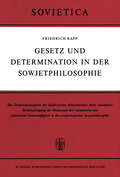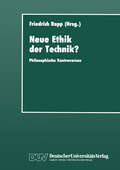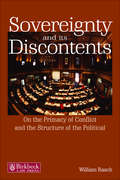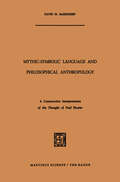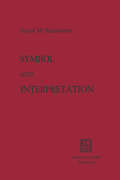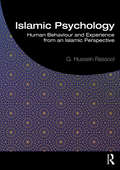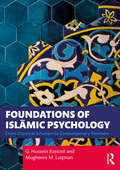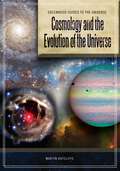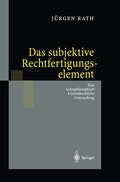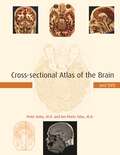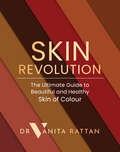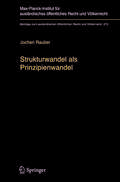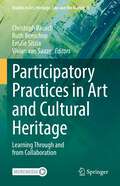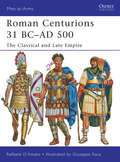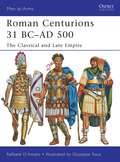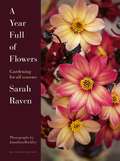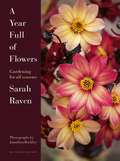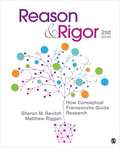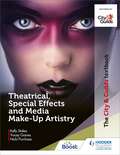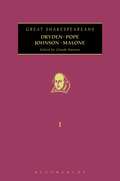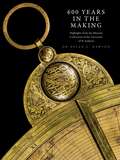- Table View
- List View
Gesetz und Determination in der Sowjetphilosophie: Zur Gesetzeskonzeption des dialektischen Materialismus unter besonderer Berücksichtigung der Diskussion über dynamische und statistische Gesetzmäßigkeit in der zeitgenössischen Sowjetphilosophie (Sovietica #26)
by F. RappSovereignty and its Discontents: On the Primacy of Conflict and the Structure of the Political (Birkbeck Law Press)
by William RaschThis book argues for the centrality of conflict in any notion of the political. In contrast to many of the attempts to re-think the political in the wake of the collapse of traditional leftist projects, it also argues for the logical and/or ontological primacy of violence over 'peace'. The notion of the political expounded here is explicitly 'realist' and anti-utopian - in large part because the author finds the consequences of attempting to think 'the good life' to be far more damaging than thinking 'the tolerable life'. The political is not thought of as a means to implement the good life; rather, the political exists because the good life does not. Indeed, if one sees 'globalization', with its emphasis on efficiency and economy, as a threat to the autonomy of the political, then one ought to be wary of political ideologies that reduce the political to species of moral or legal discourse. As laudable as the aims of human rights activists or political theorists like Rawls and Habermas may be, the consequences of their thought and actions further reduce the scope and possibility of political activity by, in effect, criminalizing political opposition. Once 'universal' norms are instantiated, political opposition becomes impossible. A fully legalized, moralized, and pacified universe is a thoroughly depoliticized one as well. Academics and advanced students researching and working in the areas of political theory, legal theory and international relations will find this book of great interest.
Sovereignty and its Discontents: On the Primacy of Conflict and the Structure of the Political (Birkbeck Law Press)
by William RaschThis book argues for the centrality of conflict in any notion of the political. In contrast to many of the attempts to re-think the political in the wake of the collapse of traditional leftist projects, it also argues for the logical and/or ontological primacy of violence over 'peace'. The notion of the political expounded here is explicitly 'realist' and anti-utopian - in large part because the author finds the consequences of attempting to think 'the good life' to be far more damaging than thinking 'the tolerable life'. The political is not thought of as a means to implement the good life; rather, the political exists because the good life does not. Indeed, if one sees 'globalization', with its emphasis on efficiency and economy, as a threat to the autonomy of the political, then one ought to be wary of political ideologies that reduce the political to species of moral or legal discourse. As laudable as the aims of human rights activists or political theorists like Rawls and Habermas may be, the consequences of their thought and actions further reduce the scope and possibility of political activity by, in effect, criminalizing political opposition. Once 'universal' norms are instantiated, political opposition becomes impossible. A fully legalized, moralized, and pacified universe is a thoroughly depoliticized one as well. Academics and advanced students researching and working in the areas of political theory, legal theory and international relations will find this book of great interest.
Mythic-Symbolic Language and Philosophical Anthropology: A Constructive Interpretation of the Thought of Paul Ricœur
by David M. RasmussenThis book will attempt to achieve a constructive and positive correla tion between mythic-symbolic language and philosophical anthropolo gy. It is intended as a reflection on the philosophical accomplishment of Paul Ricoeur. The term mythic-symbolic language in this context means the language of the multivalent symbol given in the myth with its psychological and poetic counterparts. The term symbol is not con ceived as an abstract sign as it is used in symbolic logic, but rather as a concrete phenomenon - religious, psychological, and poetic. The task inherent in this correlation is monumental when one considers the dual dilemma of problematic and possibility which is at its heart. The prob lematic arises out of the apparent difficulty presented by the so-called challenge of modernity which seems to require the elimination of my thic-symbolic language as an intelligible mode of communication. Mythic-symbolic language is sometimes eliminated because in a world molded by abstract conceptualizations of science, such a language is thought to be unintelligible. The claim is that its "primitive" explana tions have been transcended by our modernity. Others believe that the problem of mythic-symbolic language is the problem of the myth. If the mythic forms of language could be eliminated, the truth of such language could be preserved through its translation into an intelligible mode of discourse. The problematic is heightened further by the relation of consider ations of language to philosophical anthropology. Any consideration of language involves a related view of the nature of man.
Symbol and Interpretation
by D.M. RasmussenFor the past four or five years much of my thinking has centered up on the relationship of symbolic forms to philosophic imagination and interpretation. As one whose own philosophic speculations began at. the end of a cultural epoch under methodologies dominated either by neo-Kantianism or schools of logical empiricism the symbol as a prod uct of a cultural imagination has been diminished; it has been neces sary for those who wanted to preserve the symbol to find appropriate philosophical methodologies to do so. In the following chapters we shall attempt to show, through a consideration of a series of recent interpretations of the symbol, as well as through constructive argu ment, that the symbol ought to be considered as a linguistic form in the sense that it constitutes a special language with its own rubrics and properties. There are two special considerations to be taken ac count of in this argument; first, the definition of the symbol, and sec ond, the interpretation of the symbol. Although we shall refrain from defining the symbol explicitly at this point let it suffice to state that our definition of the symbol is more aesthetic than logical (in the technical sense of formal logic ), more cultural than individual, more imaginative than scientific. The symbol in our view is somewhere at the center of culture, the well-spring which testifies to the human imagination in its poetic, psychic, religious, social and political forms.
Islamic Psychology: Human Behaviour and Experience from an Islamic Perspective
by G. Hussein RassoolIslamic Psychology or ilm an-nafs (science of the soul) is an important introductory textbook drawing on the latest evidence in the sub-disciplines of psychology to provide a balanced and comprehensive view of human nature, behaviour and experience. Its foundation to develop theories about human nature is based upon the writings of the Qur'an, Sunna, Muslim scholars and contemporary research findings. Synthesising contemporary empirical psychology and Islamic psychology, this book is holistic in both nature and process and includes the physical, psychological, social and spiritual dimensions of human behaviour and experience. Through a broad and comprehensive scope, the book addresses three main areas: Context, perspectives and the clinical applications of applied psychology from an Islamic approach. This book is a core text on Islamic psychology for undergraduate and postgraduate students and those undertaking continuing professional development in Islamic psychology, psychotherapy and counselling. Beyond this, it is also a good supporting resource for teachers and lecturers in this field.
Islamic Psychology: Human Behaviour and Experience from an Islamic Perspective
by G. Hussein RassoolIslamic Psychology or ilm an-nafs (science of the soul) is an important introductory textbook drawing on the latest evidence in the sub-disciplines of psychology to provide a balanced and comprehensive view of human nature, behaviour and experience. Its foundation to develop theories about human nature is based upon the writings of the Qur'an, Sunna, Muslim scholars and contemporary research findings. Synthesising contemporary empirical psychology and Islamic psychology, this book is holistic in both nature and process and includes the physical, psychological, social and spiritual dimensions of human behaviour and experience. Through a broad and comprehensive scope, the book addresses three main areas: Context, perspectives and the clinical applications of applied psychology from an Islamic approach. This book is a core text on Islamic psychology for undergraduate and postgraduate students and those undertaking continuing professional development in Islamic psychology, psychotherapy and counselling. Beyond this, it is also a good supporting resource for teachers and lecturers in this field.
Foundations of Islāmic Psychology: From Classical Scholars to Contemporary Thinkers
by G. Hussein Rassool Mugheera M. LuqmanFoundations of Islāmic Psychology: From Classical Scholars to Contemporary Thinkers examines the history of Islāmic psychology from the Islāmic Golden age through the early 21st century, giving a thorough look into Islāmic psychology’s origins, Islāmic philosophy and theology, and key developments in Islāmic psychology. In tracing psychology from its origins in early civilisations, ancient philosophy, and religions to the modern discipline of psychology, this book integrates overarching psychological principles and ideas that have shaped the global history of Islāmic psychology. It examines the legacy of psychology from an Islāmic perspective, looking at the contributions of early Islāmic classical scholars and contemporary psychologists, and to introduce how the history of Islāmic philosophy and sciences has contributed to the development of classical and modern Islāmic psychology from its founding to the present. With each chapter covering a key thinker or moment, and also covering the globalisation of psychology, the Islāmisation of knowledge, and the decolonisation of psychology, the work critically evaluates the effects of the globalisation of psychology and its lasting impact on indigenous culture. This book aims to engage and inspire students taking undergraduate and graduate courses on Islāmic psychology, to recognise the power of history in the academic studies of Islāmic psychology, to connect history to the present and the future, and to think critically. It is also ideal reading for researchers and those undertaking continuing professional development in Islāmic psychology, psychotherapy, and counselling.
Foundations of Islāmic Psychology: From Classical Scholars to Contemporary Thinkers
by G. Hussein Rassool Mugheera M. LuqmanFoundations of Islāmic Psychology: From Classical Scholars to Contemporary Thinkers examines the history of Islāmic psychology from the Islāmic Golden age through the early 21st century, giving a thorough look into Islāmic psychology’s origins, Islāmic philosophy and theology, and key developments in Islāmic psychology. In tracing psychology from its origins in early civilisations, ancient philosophy, and religions to the modern discipline of psychology, this book integrates overarching psychological principles and ideas that have shaped the global history of Islāmic psychology. It examines the legacy of psychology from an Islāmic perspective, looking at the contributions of early Islāmic classical scholars and contemporary psychologists, and to introduce how the history of Islāmic philosophy and sciences has contributed to the development of classical and modern Islāmic psychology from its founding to the present. With each chapter covering a key thinker or moment, and also covering the globalisation of psychology, the Islāmisation of knowledge, and the decolonisation of psychology, the work critically evaluates the effects of the globalisation of psychology and its lasting impact on indigenous culture. This book aims to engage and inspire students taking undergraduate and graduate courses on Islāmic psychology, to recognise the power of history in the academic studies of Islāmic psychology, to connect history to the present and the future, and to think critically. It is also ideal reading for researchers and those undertaking continuing professional development in Islāmic psychology, psychotherapy, and counselling.
Cosmology and the Evolution of the Universe (Greenwood Guides to the Universe)
by Martin RatcliffeThis volumes in the Greenwood Guides to the Universe series covers the current scientific understanding of the creation and evolution of the universe.Cosmology and the Evolution of the Universe provides readers with an up-to-date survey of the current scientific understanding of how the universe has evolved in the almost 14 billion years since the Big Bang. Scientifically sound and written with the student in mind, it is an excellent first step for students researching the science of cosmology and a resource for all who wish to know more about the evolution of the universe.Cosmology and the Evolution of the Universe discusses all areas of what is known about the subject. Topics include: the large-scale structure of the universe; the discovery and importance of cosmic microwave background radiation; and the forces and particles involved in the evolution of the universe. The book even tackles that most provocative of questions: How will the universe end?
Das subjektive Rechtfertigungselement: Zur kriminalrechtlichen Relevanz eines subjektiven Elements in der Ebene des Unrechtsausschlusses — auf der Grundlage einer Rechtsphilosophie im normativen Horizont des Seins. Eine rechtsphilosophisch-kriminalrechtliche Untersuchung
by Jürgen RathCross-sectional Atlas of the Brain
by Peter Ratiu Ion-Florin TalosCross-sectional Atlas of the Brain provides for the first time a set of high-resolution color cross-sections of the human brain (six times higher than that of the only complete data set available to date), each image accompanied by state-of-the-art MRI and CT scans of the same specimen. The sections were made at an interval of 147 micrometers of frozen tissue, virtually artifact free, with the blood vessels filled at sub-millimeter level. The more than two hundred detailed and fully annotated images in this atlas provide a complete body of reference to the gross anatomy of the brain. The accompanying line drawings of these images provide a roadmap for easy orientation. The unparalleled resolution of the images also made it possible to derive cross-sections of the same specimen in all standard orientations--sagittal, coronal, and axial--through multi-planar computer-aided reformatting. This feature, which eliminates inter-subject variability, has never before been available in an anatomical atlas and makes the atlas especially useful for identifying and following anatomical structures in each plane. About the Companion DVD (View a sample in PDF format) While the book itself contains 93 images (44 axial, 28 coronal, and 21 sagittal), the DVD contains the complete series of 1,481 axial images from one anatomic specimen from which the 44 axial images in the book were selected. These images were made at a resolution of 1525x1146 or 147 µm/pixel with a digital camera. The axial images are accompanied by 1,528 sagittal and 1,146 coronal images that were made by reformatting and reslicing the axial images. By placing these images side-by-side-by-side the DVD allows the user to see a particular region of the brain in all three orientations-axial, sagittal and coronal-simultaneously. These images are further accompanied by radiologic data. The DVD also allows the user to view a synchronized slide show of the images in all three planes. Images on the DVD that also appear in the book are highlighted with a blue background. Cross-sectional Atlas of the Brain will be an essential reference for neuroscientists and clinicians (neurologists, radiologists, and neurosurgeons).
Skin Revolution: The Ultimate Guide To Beautiful And Healthy Skin Of Colour
by Dr Vanita RattanSkin Revolution is where skincare meets science and self-love – to empower you to look good, feel great, and glow in your melanin-rich skin. ‘I wish I had advice like this growing up – an incredible guide for people of colour everywhere!’ KAUSHAL, Make-up Artist, YouTuber and Entrepreneur
Strukturwandel als Prinzipienwandel: Theoretische, dogmatische und methodische Bausteine eines Prinzipienmodells des Völkerrechts und seiner Dynamik (Beiträge zum ausländischen öffentlichen Recht und Völkerrecht #272)
by Jochen RauberDas Buch versucht, zu einem besseren Verständnis des Strukturwandels des Völkerrechts beizutragen. Zu diesem Zweck entwirft es ein Prinzipienmodell des Völkerrechts, mit dem sich die völkerrechtlichen Entwicklungen, an die die Strukturwandelthese anknüpft, theoretisch erklären und dogmatisch erfassen lassen. Es weist nach, dass die Regeln des Völkerrechts in normativer Hinsicht auf völkerrechtlichen Grundprinzipien aufbauen, zeigt, dass der Bestand dieser Prinzipien wächst und analysiert, inwieweit das Aufkommen neuer Völkerrechtsprinzipien das Verständnis bestehender Völkerrechtsregeln beeinflusst. Ausgehend hiervon plädiert das Werk dafür, die Erscheinungen des völkerrechtlichen Strukturwandels als Konsequenz von Veränderungen im Bestand völkerrechtlicher Grundprinzipien zu verstehen. An Fallstudien aus unterschiedlichen Teilbereichen des Völkerrechts wird die Theorie abschließend erprobt.
Participatory Practices in Art and Cultural Heritage: Learning Through and from Collaboration (Studies in Art, Heritage, Law and the Market #5)
by Christoph Rausch Ruth Benschop Emilie Sitzia Vivian Van SaazeThis edited volume analyzes participatory practices in art and cultural heritage in order to determine what can be learned through and from collaboration across disciplinary borders. Following recent developments in museology, museum policies and practices have tended to prioritize community engagement over a traditional focus on collecting and preserving museal objects. At many museal institutions, a shift from a focus on objects to a focus on audiences has taken place. Artistic practices in the visual arts, music, and theater are also increasingly taking on participatory forms. The world of cultural heritage has seen an upsurge in participatory governance models favoring the expertise of local communities over that of trained professionals. While museal institutions, artists, and policy makers consider participation as a tool for implementing diversity policy, a solution to social disjunction, and a form of cultural activism, such participation has also sparked a debate on definitions, and on issues concerning the distribution of authority, power, expertise, agency, and representation. While new forms of audience and community engagement and corresponding models for “co-creation” are flourishing, fundamental but paralyzing critique abounds and the formulation of ethical frameworks and practical guidelines, not to mention theoretical reflection and critical assessment of practices, are lagging.This book offers a space for critically reflecting on participatory practices with the aim of asking and answering the question: How can we learn to better participate? To do so, it focuses on the emergence of new norms and forms of collaboration as participation, and on actual lessons learned from participatory practices. If collaboration is the interdependent formulation of problems and entails the common definition of a shared problem space, how can we best learn to collaborate across disciplinary borders and what exactly can be learned from such collaboration?
Roman Centurions 31 BC–AD 500: The Classical and Late Empire (Men-at-Arms)
by Giuseppe Rava Dr Raffaele D’AmatoIn the years between 31 BC and AD 500 the Romans carved out a mighty empire stretching from Britain to the deserts of North Africa. The men who spearheaded this expansion were the centurions, the tough, professional warriors who led from the front, exerted savage discipline and provided a role model for the legionaries under their command. This book, the second volume of a two-part study, reveals the appearance, weaponry, role and impact of these legendary soldiers during the five centuries that saw the Roman Empire reach its greatest geographical extent under Trajan and Hadrian, only to experience a long decline in the West in the face of sustained pressure from its 'barbarian' neighbours. Featuring spectacular full-colour artwork, written by an authority on the army of the Caesars and informed by a wide range of sculptural, written and pictorial evidence from right across the Roman world, this book overturns established wisdom and sheds new light on Rome's most famous soldiers during the best-known era in its history.
Roman Centurions 31 BC–AD 500: The Classical and Late Empire (Men-at-Arms #479)
by Giuseppe Rava Raffaele D’AmatoIn the years between 31 BC and AD 500 the Romans carved out a mighty empire stretching from Britain to the deserts of North Africa. The men who spearheaded this expansion were the centurions, the tough, professional warriors who led from the front, exerted savage discipline and provided a role model for the legionaries under their command. This book, the second volume of a two-part study, reveals the appearance, weaponry, role and impact of these legendary soldiers during the five centuries that saw the Roman Empire reach its greatest geographical extent under Trajan and Hadrian, only to experience a long decline in the West in the face of sustained pressure from its 'barbarian' neighbours. Featuring spectacular full-colour artwork, written by an authority on the army of the Caesars and informed by a wide range of sculptural, written and pictorial evidence from right across the Roman world, this book overturns established wisdom and sheds new light on Rome's most famous soldiers during the best-known era in its history.
A Year Full of Flowers: Gardening for all seasons
by Sarah RavenInspiration, planting ideas and expert advice for a beautiful garden all-year roundColour and scent are the hallmarks of Sarah Raven's style – and they are simple luxuries that everyone can bring into their garden.A Year Full of Flowers reveals the hundreds of hardworking varieties that make the garden sing each month, together with the practical tasks that ensure everything is planted, staked and pruned at just the right time.Tracing the year from January to December at her home, Perch Hill, Sarah offers a complete and transporting account of a garden crafted over decades. Sharing the lessons learned from years of plant trials, she explains the methods that have worked for her, and shows you how to achieve a space that's full of life and colour.Discover long-lasting, divinely scented tulips, roses that keep flowering through winter, the most magnificent dahlias and show-stopping alliums, as well as how to grow sweet peas up a teepee, take cuttings from chrysanthemums and stop mildew in its tracks.This is passionate, life-enriching gardening; it's also simple, adaptable and can work for you. Sarah has made the garden central to her life – this book shows you how you can too.
A Year Full of Flowers: Gardening for all seasons
by Sarah RavenInspiration, planting ideas and expert advice for a beautiful garden all-year roundColour and scent are the hallmarks of Sarah Raven's style – and they are simple luxuries that everyone can bring into their garden.A Year Full of Flowers reveals the hundreds of hardworking varieties that make the garden sing each month, together with the practical tasks that ensure everything is planted, staked and pruned at just the right time.Tracing the year from January to December at her home, Perch Hill, Sarah offers a complete and transporting account of a garden crafted over decades. Sharing the lessons learned from years of plant trials, she explains the methods that have worked for her, and shows you how to achieve a space that's full of life and colour.Discover long-lasting, divinely scented tulips, roses that keep flowering through winter, the most magnificent dahlias and show-stopping alliums, as well as how to grow sweet peas up a teepee, take cuttings from chrysanthemums and stop mildew in its tracks.This is passionate, life-enriching gardening; it's also simple, adaptable and can work for you. Sarah has made the garden central to her life – this book shows you how you can too.
Reason And Rigor: How Conceptual Frameworks Guide Research
by Sharon M. Michelle Ravitch J. John Matthew Matt RigganDesigned for novice as well as more experienced researchers, Reason & Rigor by Sharon M. Ravitch and Matthew Riggan presents conceptual frameworks as a mechanism for aligning literature review, research design, and methodology. The book explores the conceptual framework--defined as both a process and a product--that helps to direct and ground researchers as they work through common research challenges. Focusing on published studies on a range of topics and employing both quantitative and qualitative methods, the updated Second Edition features two new chapters and clearly communicates the processes of developing and defining conceptual frameworks.
The City & Guilds Textbook: Theatrical, Special Effects and Media Make-Up Artistry
by Kelly Rawlings Tracey Gaines Nicki HobbsCreate the foundation for a successful career in the theatrical and media make-up industry with this new textbook, endorsed by City & Guilds for theatrical, special effects and hair and media make-up artistry qualifications at Levels 2 and 3.- Study with confidence, with content covering the latest qualifications and industry standards, including the 6010 specifications.- Get ready to work in make-up, film, TV or theatre with handy hints from experienced professionals.- Hone your practical skills with hundreds of photographs showcasing creative ideas from look books and industry portfolios.- Understand complex topics such as anatomy and physiology with ease with simple explanations and all of the important terminology explained.- Prepare effectively for the written exams and practical synoptic test with practice questions, scenarios and invaluable guidance.
Dryden, Pope, Johnson, Malone: Great Shakespeareans: Volume I (Great Shakespeareans)
by Claude RawsonGreat Shakespeareans offers a systematic account of those figures who have had the greatest influence on the interpretation, understanding and cultural reception of Shakespeare, both nationally and internationally. In this volume, leading scholars assess the contribution of Alexander Pope, John Dryden, Samuel Johnson and Edmond Malone to the afterlife and reception of Shakespeare and his plays. Each substantial contribution assesses the double impact of Shakespeare on the figure covered and of the figure on the understanding, interpretation and appreciation of Shakespeare, provide a sketch of their subject's intellectual and professional biography and an account of the wider cultural context, including comparison with other figures or works within the same field.
Dryden, Pope, Johnson, Malone: Great Shakespeareans: Volume I (Great Shakespeareans)
by Claude RawsonGreat Shakespeareans offers a systematic account of those figures who have had the greatest influence on the interpretation, understanding and cultural reception of Shakespeare, both nationally and internationally. In this volume, leading scholars assess the contribution of Alexander Pope, John Dryden, Samuel Johnson and Edmond Malone to the afterlife and reception of Shakespeare and his plays. Each substantial contribution assesses the double impact of Shakespeare on the figure covered and of the figure on the understanding, interpretation and appreciation of Shakespeare, provide a sketch of their subject's intellectual and professional biography and an account of the wider cultural context, including comparison with other figures or works within the same field.
600 Years in the Making: Highlights from the Museum Collections of the University of St Andrews
by Helen RawsonThis guidebook presents stunning highlights from the treasures of the University of St Andrews collection, revealing objects from around the world and from ancient times to the present day. Featuring specially commissioned photography and articles on each object by the museum's co-director, this book brings the stories of these fascinating objects to a wider audience for the first time.
